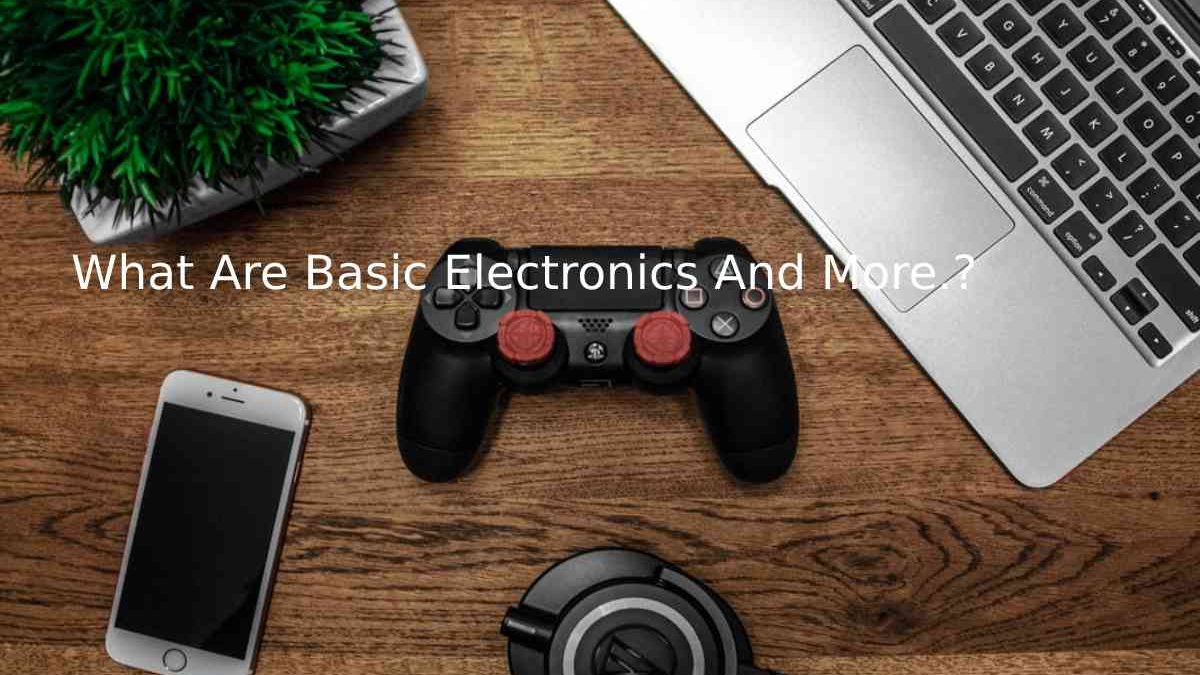Basic Electronics-Electrons, a component of atoms, and their use, known as electronics, play an important role in many household appliances. Basic electronics include the minimal “electronic components” of everyday electronic devices. These electronic mechanisms include resistors, transistors, capacitors, diodes, inductors, and transformers. They are powered by a battery and designed to work according to certain physical laws and principles. Basic electronics also deals with the measurement of voltage, current (electron flow) and resistance in the assembled working “circuit”.
Table of Contents
Principles Of Electronics
All electronic devices work on a fundamental physical principle known as Ohm’s Law, which states that a circuit contains a voltage directly proportional to the current and the resistance that the current encounters in that circuit. The circuitry includes the electronic components, also known as circuit elements, connected to a battery by wires and designed to submit Ohm’s rule.
Power Supply
The battery crops the voltage and current that drive or power the electronic components. The electrons flow through the wires and modulate by the arrangement of the electronic components to produce specific results. Voltage is slow in volts units, and current in units called amperes or amps.
Resistors Is Basic Electronics
Resistance is a circuit element designed to offer resistance to the flow of electrons known as current. In doing so, it generates heat and gives off energy, a resistance multiplied by the square of the current. A heating coil is an example of a resistance application. When connected in series, the resistors have an additive value (i.e. the circuit’s total resistance is equivalent to the sum of all resistor values). Arranged in parallel, their combined value decreases. The unit of resistance is the Ohm. In practice, we have units in kiloohms and megohms.
Capacitors Is Basic Electronics
Capacitors are circuit elements that are the opposite of resistors: They store electrical energy. When they place in parallel, their combined value increases; when they connect in series, their combined value decreases. Basic electronic circuits always contain capacitors.
Diodes And Transistors
The diode, a circuit element, only allows current flow in one direction. It has two terminals as opposed to the transistor, which has three. In the transistor, the current can flow in different directions. The diodes and transistors modulate the direction and voltage of the current.
Inductors, Transformers And RLC Circuit Is Basic Electronics
Firstly, Basic electronic circuits often include inductors and transformers as circuit elements. Inductance is a coil of wire that creates a desired magnetic field instead of a capacitor, which creates a desired electric field. In combination with a resistor and a capacitor, an inductor contributes to a special “tuning” circuit called an RLC circuit that can be tuned to different frequencies when electric current pass through it. Transformers, another type of circuit element, can increase or decrease a voltage to desired values. These circuit components form what commonly refer to as “basic electronics”.
Measuring Device Is Basic Electronics
Basic electronics is not complete without mentioning the basic instruments used in electronic measurements. It includes analog and digital meters that measure voltage, current, resistance, and capacitance; Power supplies that provide stable regulated voltage and current; oscilloscopes that measure circuit waveforms of circuits; and function generators that provide desired standard waveforms.
Helpfull Resources
whatsapp par full dp kaise lagayen techfinz.com
dewata 12 jkt.com
www clickfoto co uk
convertidor a mp3
Allsmo.com Instagram
joinpd.com join


